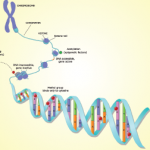Also, she said, comparisons of methylation patterns between knee OA and hip OA have found differences, confirming that the diseases “have some common pathways but some strong differences in terms of pathogenesis.”
Beyond Genes
Tim Spector, MD, professor of epidemiology at King’s College London, said that when it comes to personalized medicine—the ultimate therapeutic goal—genome-wide association studies are not particularly helpful, having little use in actual diagnosis and prediction. But used with intermediate or molecular phenotypes—immunomics, metabolomics or other “-omics”—the effects can be more meaningful.
The FTO gene studied in OA, for example, has a small effect in GWAS studies, but once the mechanism is understood, steps in gene editing can be taken to have a large effect—in the case of FTO, on the size and type of adipocytes.
“If you can understand that mechanistically, you can make a very big effect experimentally,” Dr. Spector said. “So I think that’s the real important message from this stuff is, don’t get put off by these tiny effect sizes or the fact that you need 10,000 or 20,000 people to find them.”
Dr. Spector—the founder of Twins UK, a database on identical twins and one of the world’s largest collections of genotypic and phenotypic information—said that epigenetics’ role, including in OA and other rheumatic diseases, is gradually being seen as bigger than previously thought. For events such as heart disease, depression and cancer, the concordance is less than 50/50 if your identical twin has it, the data show.
A worm, he reminded the audience, has more genes than a human being.
“Perhaps, we shouldn’t give genes quite as much credence as we have done in the last 10 years,” he said. “There’s much more to life than just having a few genes. It’s what you do with them.”
5mC
Nidhi Bhutani, PhD, professor of orthopaedic surgery at Stanford University, said researchers are making strides in understanding what appears to be an important role of the de-methylation of 5-methylctyosine (5mC)—a DNA cytosine nucleotide that has been modified with the addition of a methyl group. In the epigenetics field, excitement has been stirred by the emergence of the role of 5-hydroxymethylcytosine (5hmC), a product of that de-methylation. Researchers have found that 5hmC appears to be linked to gene expression.
At Stanford, researchers have found that 5hmC is increased in OA chondrocytes and that it is not simply a product of aging.3,4 Researchers have also compared results of OA susceptibility gene studies with results from de-methylation studies and found a large number of genes that overlap.5,6,7
